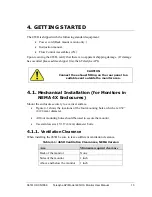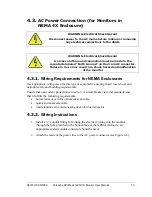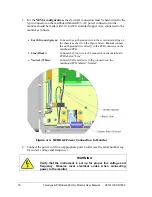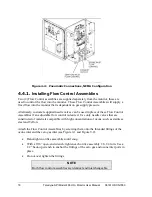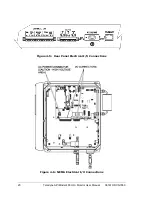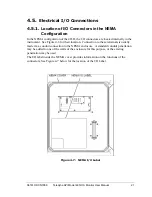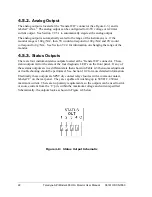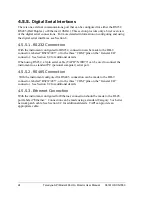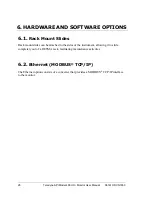
06161H DCN7969
Teledyne API Model 465H O
3
Monitor User Manual
11
3.
PRINCIPLE OF OPERATION
The detection of ozone molecules is based on absorption of 254 nm UV light due to an
internal electronic resonance of the O3 molecule. The 465H uses a mercury lamp
constructed so that a large majority of the light emitted is at the 254nm wavelength. Light
from the lamp shines down a hollow quartz tube that is alternately filled with sample gas,
then filled with gas scrubbed to remove ozone. The ratio of the intensity of light passing
through the scrubbed gas to that of the sample forms a ratio I/Io. This ratio forms the
basis for the calculation of the ozone concentration.
The Beer-Lambert equation, shown below, calculates the concentration of ozone from the
ratio of light intensities.
o
O
n
psi
L
C
695
.
14
273
10
6
3
Where:
I = Intensity of light passed through the sample
I
o
= Intensity of light through sample free of ozone
= absorption coefficient
L = path length
3
O
C
= concentration of ozone in parts per million
T
= sample temperature in Kelvin
P
= pressure in pounds per square inch (absolute)
As can be seen the concentration of ozone depends on more than the intensity ratio.
Temperature and pressure influence the density of the sample. The density of the gas
changes the number of ozone molecules in the absorption cell which impacts the amount
of light removed from the light beam. These effects are addressed by directly measuring
temperature and pressure and including their actual values in the calculation. The
absorption coefficient is a number that reflects the inherent ability of ozone to absorb 254
nm light. Most current measurements place this value at 308 cm-1 atm-1 at STP. The
value of this number reflects the fact that ozone is a very efficient absorber of UV
radiation which is why stratospheric ozone protects the life forms lower in the
atmosphere from the harmful effects from solar UV radiation. Lastly, the absorption path
length determines how many molecules are present in the column of gas in the absorption
cell.
Summary of Contents for 465H
Page 2: ......















